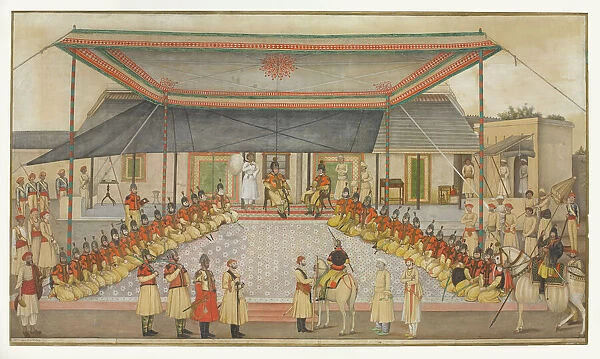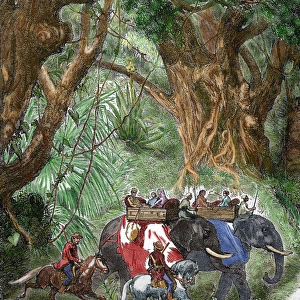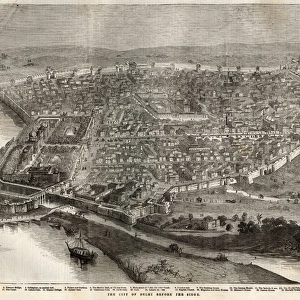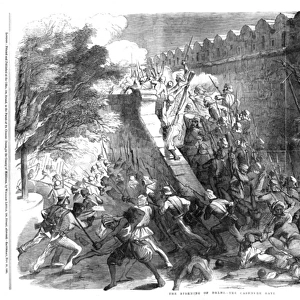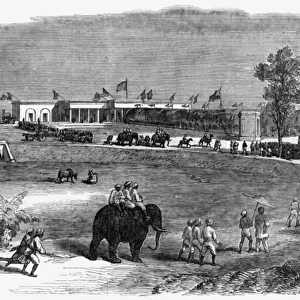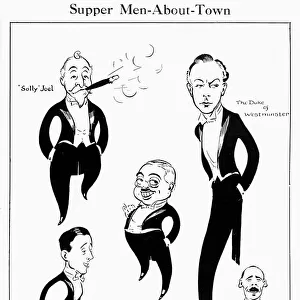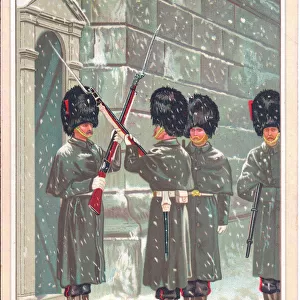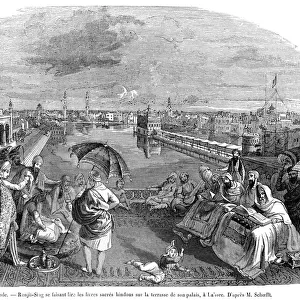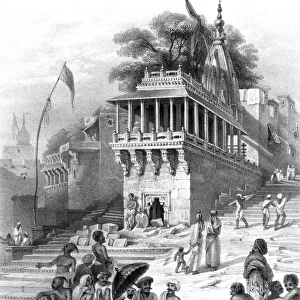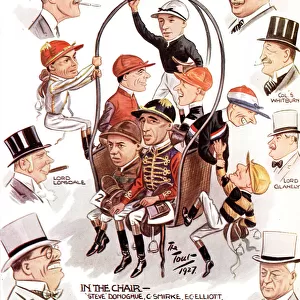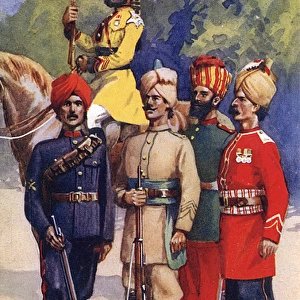Home > Historic > Battles > Related Images
Colonel James Skinner holding a Regimental Durbar
![]()

Wall Art and Photo Gifts from Mary Evans Picture Library
Colonel James Skinner holding a Regimental Durbar
Colonel James Skinner holding a Regimental Durbar, 1827.Watercolour with gouache on European paper by Ghulam Ali Khan (fl 1817-1855), 1827.Inscribed in Nastaliq script lower left ?The work of Ghulam Ali Khan the painter, resident of the Seat of the Empire Shahjahanabad, it was completed in the Christian year 1827?Skinner, seated centre left, may be seen presiding over a durbar of his regiment, an occasion when any soldier was at liberty to raise with his commanding officer anything that concerned him. The holding of a durbar, when Skinner mixed freely with his soldiers and men, was a conscious re-creation of Afghan and Mughal military and ceremonial traditions, which gave his soldiers a corporate sense of their upward mobility in the Companys service.The son of a Scottish officer of the Bengal Army and a Rajput girl whom he had captured during the war against the Raja of Benares, James Skinners (1778-1841) military career commenced with eight years service in the part European officered Maratha army. In 1803 when war broke out between the British and the Marathas he obliged to leave their service and after their defeat was made commander of 800 horsemen who joined the British. Such were the origins of what was to become the senior regiment of the Indian cavalry, Skinners Horse (1st Duke of Yorks Own Cavalry). In 1827 the regiment was known as the 1st Regiment of Local Horse and had just been awarded the battle honour Bhurtpore for its part in the reduction of the fortress at Bharatpur, Skinner himself being made a Companion of the Order of the Bath. Skinner was well aware that on more than one occasion, racial prejudice against Eurasion officers had interfered with his advancement in the Companys service - counterbalanced only by his employers awareness of the important part he and his men played in their military build up, providing the light cavalry needed so urgently to fight the Pindaris and Marathas, and later settling conquered territory. In the lat
Mary Evans Picture Library makes available wonderful images created for people to enjoy over the centuries
Media ID 14395062
© The National Army Museum / Mary Evans Picture Library
1817 1827 1855 Colonel Durbar Gouache Inscribed Khan Lower Painter Regimental Resident Script Seat Skinner Nastaliq
EDITORS COMMENTS
Colonel James Skinner, a Scottish-Rajput military leader, is depicted in this stunning watercolor painting from 1827, presiding over a Regimental Durbar of his horse regiment. The Durbar was an important military and ceremonial tradition in Afghan and Mughal armies, allowing soldiers to freely discuss any concerns with their commanding officer. Born to a Scottish father in the Bengal Army and a Rajput mother he had captured during war against the Raja of Benares, Skinner's military career began at the age of eight in the part-European officered Maratha army. When war broke out between the British and the Marathas in 1803, Skinner was forced to leave their service and joined the British, becoming commander of 800 horsemen who joined the British forces. This marked the beginning of what would become the senior regiment of the Indian cavalry, Skinner's Horse (1st Duke of York's Own Cavalry). In 1827, the regiment was known as the 1st Regiment of Local Horse and had recently been awarded the battle honor Bhurtpore for its role in the reduction of the fortress at Bharatpur. Skinner himself was made a Companion of the Order of the Bath. Skinner's advancement in the British East India Company's service was hindered at times by racial prejudice against Eurasian officers, but his importance to the British military build-up, providing the light cavalry needed to fight against the Pindaris and Marathas, and later settling conquered territory, ensured that his contributions were recognized. This beautiful work of art, created by Ghulam Ali Khan, captures a significant moment in Skinner's career and the history of the Indian cavalry.
MADE IN AUSTRALIA
Safe Shipping with 30 Day Money Back Guarantee
FREE PERSONALISATION*
We are proud to offer a range of customisation features including Personalised Captions, Color Filters and Picture Zoom Tools
SECURE PAYMENTS
We happily accept a wide range of payment options so you can pay for the things you need in the way that is most convenient for you
* Options may vary by product and licensing agreement. Zoomed Pictures can be adjusted in the Cart.

